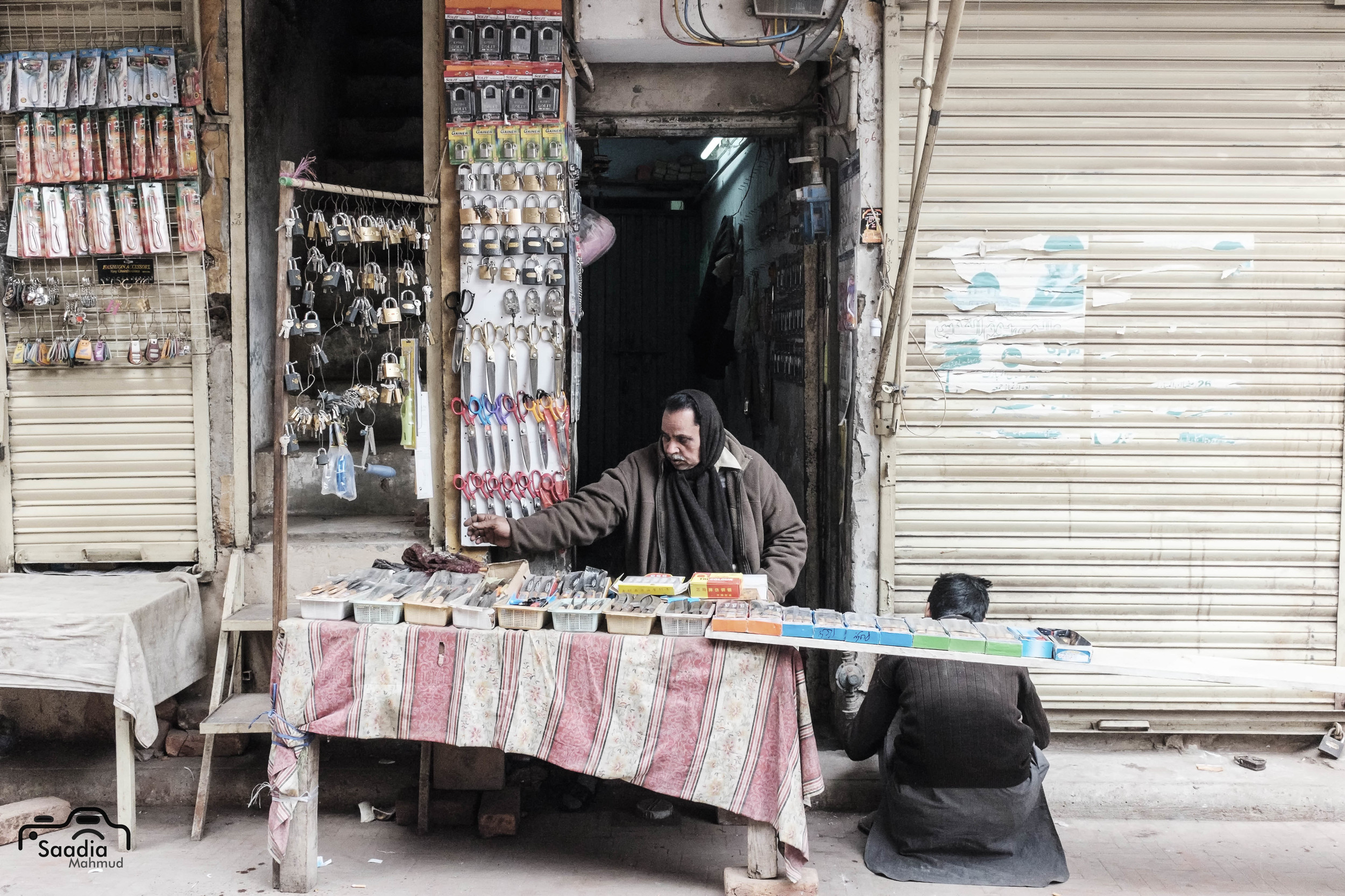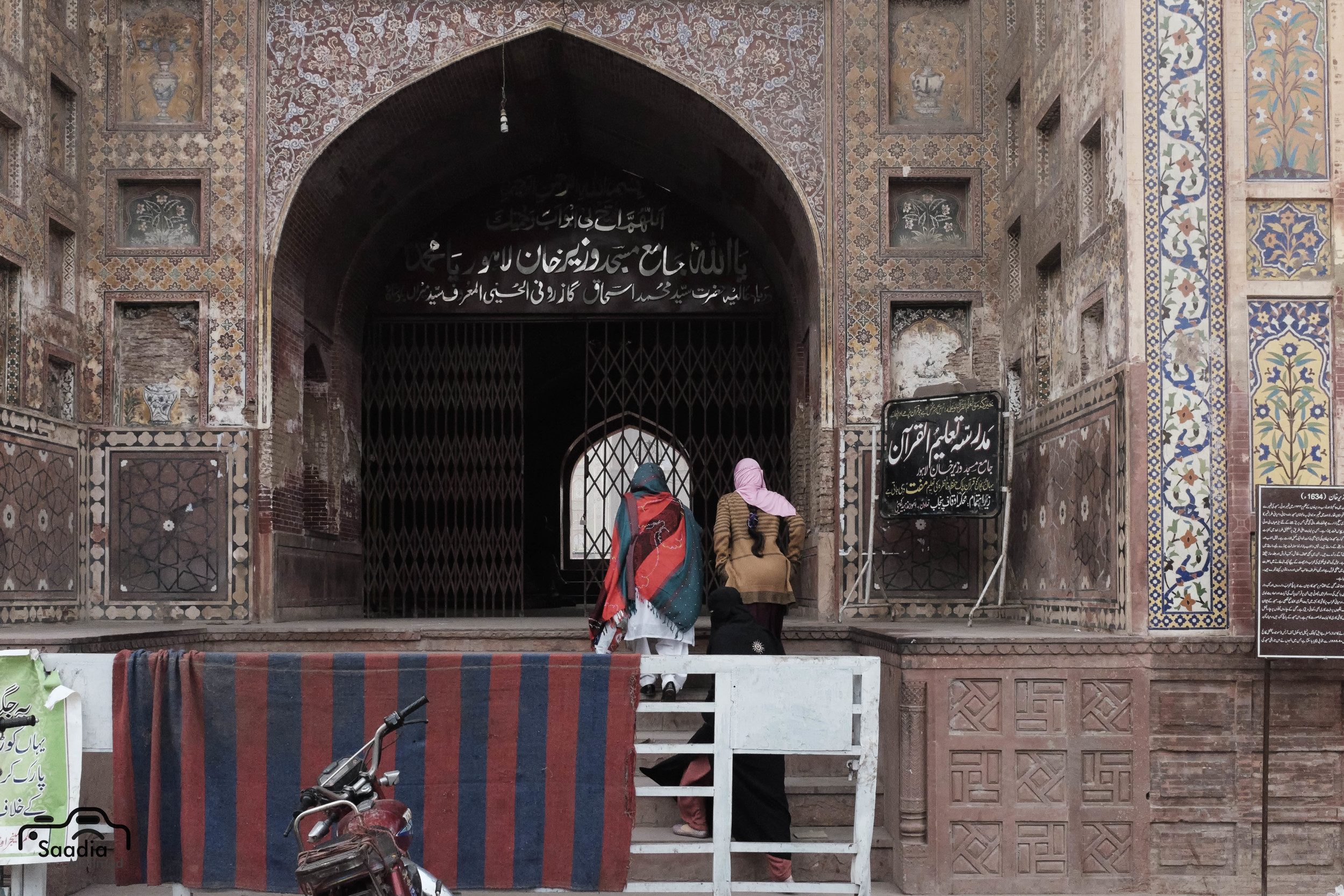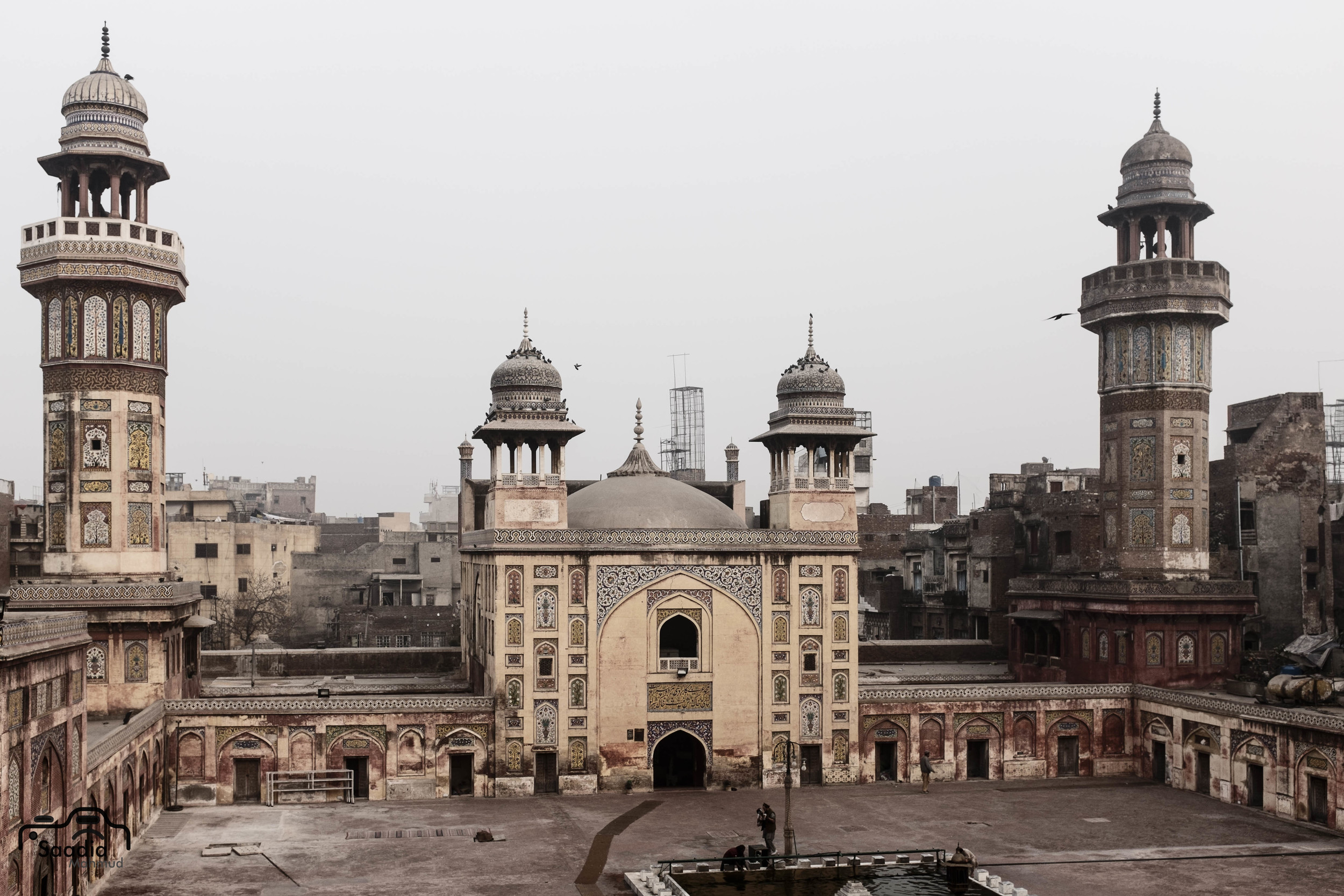When I went to Lahore in early Jan, I had the opportunity to visit the Wazir Khan Mosque. The mosque was built in 1634-35 A.D. during the reign of Mughal Emperor ShahJehan. The mosque which is located very near the Dehli gate within the walled inner city of Lahore, takes its name from its builder, Nawab Wizard Khan, who was the Governor of Lahore until 1639 A.D. He was commonly known as as Wazir Khan (the word wazir means ‘minister’ in Urdu) and thus the mosque came to be known as the Wazir Khan Mosque.
The way to the mosque is through a busy and chaotic bazaar (market) that runs all around the mosque itself.
Four octagonal minarets mark the corners of the main courtyard, the beautiful symmetry adding to the grandeur the mosque. The main mosque itself is built from brick and tile, a construction typical of the area and period in which it was created.
Each of the mosque’s five compartments is crowned by a dome and opens onto a large courtyard. The one is the centre is the main prayer hall – larger than the rest, it features a high framed portal protruding from the façade, and its walls are covered by intricate frescos.
As you step into the courtyard, I was somewhat taken aback by the splendid piece of architecture that presented itself. The mosque courtyard is framed by the praying chamber on the west, khanas or study cloisters for religious scholars on the north and south, and the deorhi with entrance cubicles on the east. The whole building presents a dazzling view of tile-mosaic and frescoes of extraordinary beauty, which could hardly have been imagined when you battled through the narrow winding streets filled with jostling crowds.
The beautiful mosaic and calligraphy used to decorate the minarets and walls of the mosque and it's courtyard still retain their beauty despite being hundreds of years old and under severe stress from years of neglect and the general pollution in that area. In fact, at one point, I was horrified to see some modern posters stuck on the mosaic work of the Mosque outside the main entrance. In the basement of the courtyard of the mosque is situated the shrine of the saint Syed Muhammad Ishaq Gazruni, who died in the 14th century.
Another interesting feature of the mosque is the incorporation of 22 shops into its ground plan. Situated on either side of the entrance hall, these shops form a bazaar (market) with a brick-paved passage in between. This commercial area extends east beyond the mosque into the Chowk Wazir Khan (Wazir Khan Square) which remains a vibrant commerical district to the present day. In fact, I was told that the market area outside the mosque and extending all the way to Dehli Gate once had been part of the mosque but now has been sold and is owned as private property.
A bit of research on the mosque yielded the fact that it's on the tentative list of UNESCO world heritage sites AND there were some wonderful paintings and images from the late 1800s of the mosque itself. I don't know enough about it's history to be able to give a significant summery of the mosque's history but suffice to say, I thought it was absolutely beautiful and I wish we did a better job of preserving some of our cultural heritage sites.






















